(Note: If you haven’t read it yet, my introductory post on this Star Trek: The Original Series rewatch is a good place to start.)
Original Air Date: February 16, 1968
Crew Death Count: 0
Bellybuttons: 2 (Kirk and Spock get topless in prison)
It would be tempting to call “Patterns of Force” the lowest moment of the original series, if we didn’t still have “The Omega Glory” to suffer through. Because of its Nazi imagery and one character, albeit a drug-addled crackpot, describing the Third Reich as efficient, “Patterns of Force” did not air in Germany in any form until 1995. Lucky devils. This week the Enterprise goes in search of Federation historian John Gill (David Brian), who was observing the planet Ekos but hasn’t been heard from in six months. The crew – really just Kirk, Spock, and McCoy – learns that Gill has significantly violated the Prime Directive on Ekos, giving rise to a Nazi regime obsessed with killing inhabitants of nearby Zeon. The Ekosians are about to implement the Final Solution Decision, exterminating all Zeons, unless Kirk and company can escape the Nazi clutches and get to the Führer (seriously), Gill himself. The whole Nazis in Space premise makes Space Moby Dick look like a work of genius.
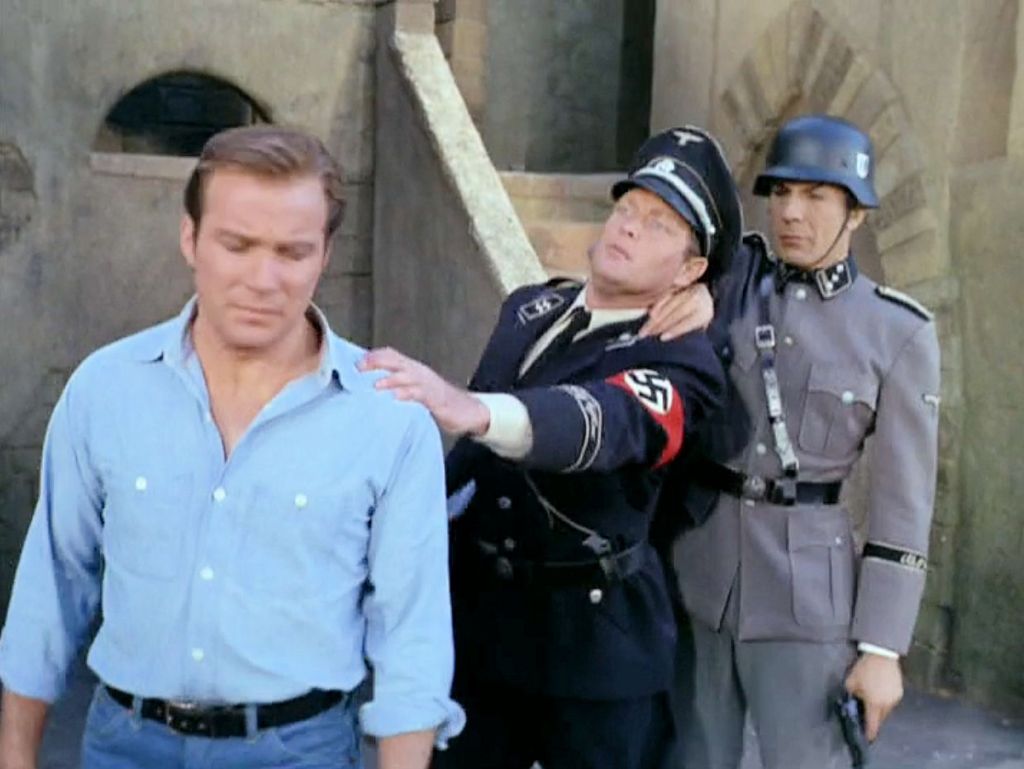
John Gill, like Roger Korby and Dr. Tristan Adams, is revered throughout the Federation but has gone completely off the rails by the time we meet him. Gill’s writings have been important to Spock’s knowledge of earth history, which explains a lot, and Gill was one of Kirk’s instructors at Starfleet Academy. “What impressed me most,” Spock says, “was his treatment of earth history as causes and motivations rather than dates and events.” Besides the fact that Vulcan history must be a result of causes and motivations as much as earth’s, it makes Gill’s transition from respected historian to fascist fundamentalist all the more bizarre. Or maybe the Gill/Korby/Adams pattern isn’t so surprising; maybe their substance never did live up to their image. An easy example from our own contemporary history is Harvey Weinstein, who founded a highly successful concert promotion business with his brother in 1972, only four years after “Patterns of Force” aired. Later, via Miramax (launched in 1979, the same year Star Trek: The Motion Picture was released) and The Weinstein Company, Weinstein helped give the world The Thin Blue Line (1988), The Crying Game (1992), Pulp Fiction (1994), Good Will Hunting (1997), and a long list of other films. He supported fundraising for poverty, AIDS, multiple sclerosis, and a host of other issues. At the same time, Weinstein was known in industry circles as “aggressive” to the point of violence, on top of the many sexual assaults he committed over the years. Maybe John Gill was a super-achiever like Weinstein, creating a bubble of respectability that hid his dark tendencies.
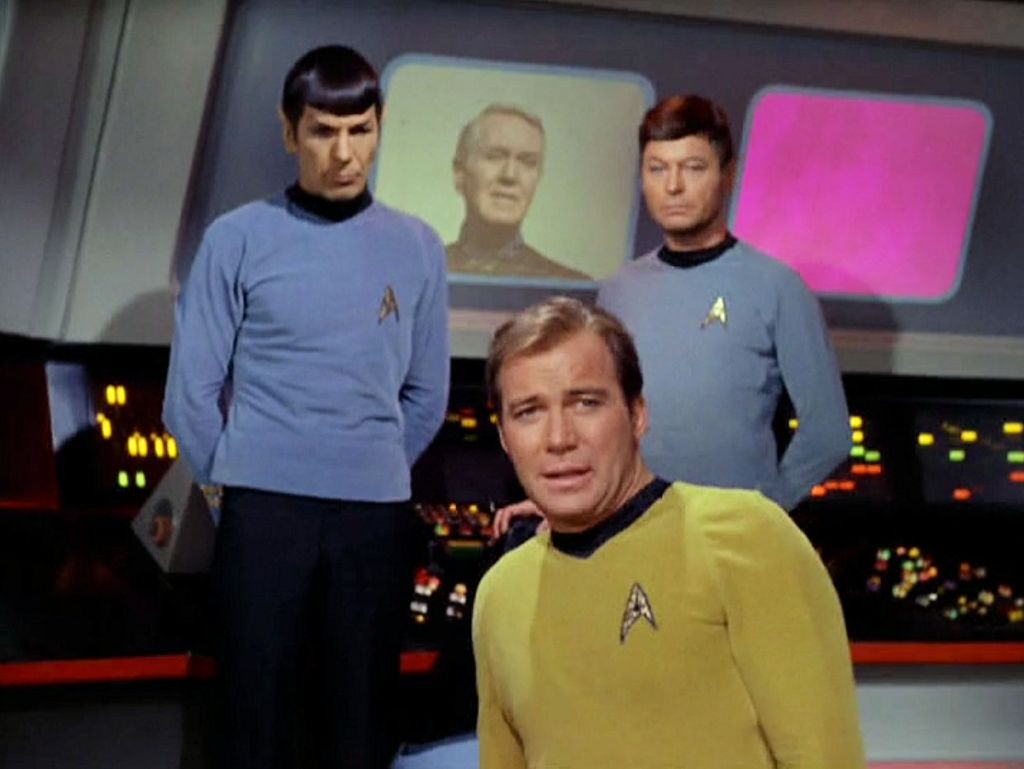
The timeline adds to the confusion of Gill’s behavior. We’re told that Ekos’ Nazi movement began only a few years ago and coincides with Gill’s arrival. Yet Daras (Valora Noland), the Ekosian resistance member posing as a highly-decorated Party officer, says she grew up admiring Gill; Valora Noland was twenty-six years old when “Patterns of Force” aired. Ekosians’ technology is “generations” ahead of where it’s expected to be, and it’s remarkably similar to earth technology of the 1940s. Even if Gill was here for twenty years, how did he accomplish so much change? The logical comparison is Hitler, whose Beer Hall Putsch took place in 1923. While Hitler drove Germany to fearsome achievements, he also committed gross errors (more on that later), and twenty-two years later he was dead and Germany was in ruins. This dramatic transformation, however, was primed by the First World War and the subsequent economic downturn that invited the likes of Hitler to power in the first place. Regardless of how much time it really took Gill to ruin not one, but two planets, he has only been out of contact with the Federation for six months. Someone in the Federation hasn’t been observing the observer.
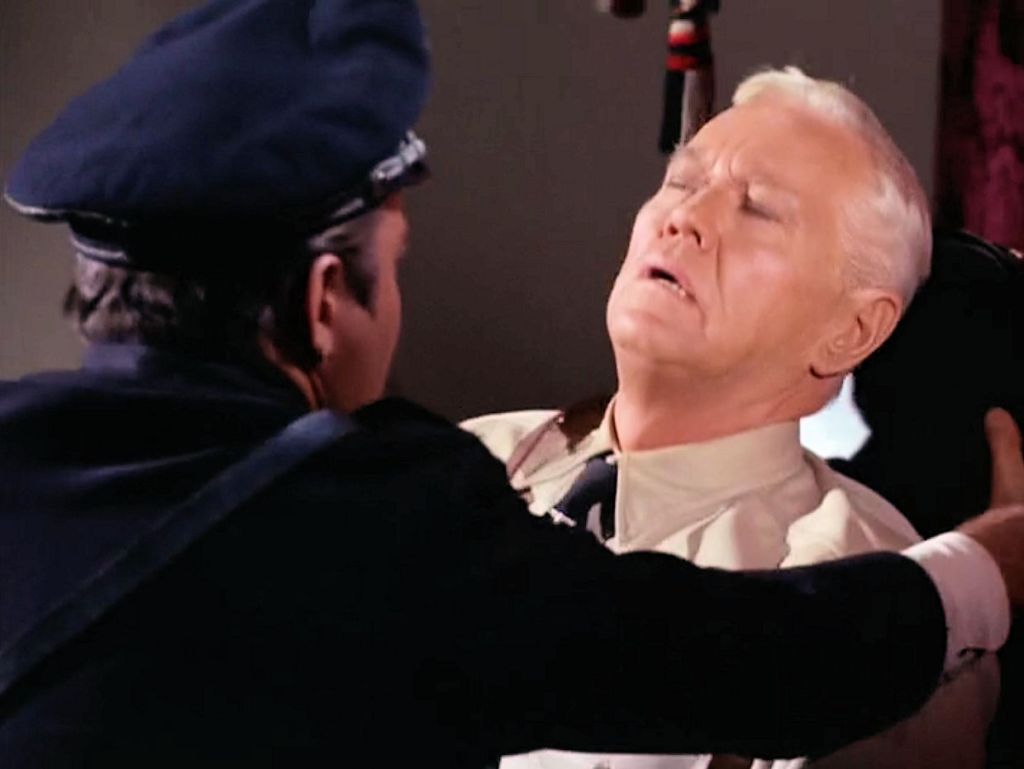
Some poor attempts at humor muddle the episode’s tone. Spock, charging into Nazi headquarters with Kirk, talks about the “exhilaration” of risk; ridiculous, considering Spock’s prior knowledge of probabilities and his ongoing mission of risk. McCoy struggles to put on stormtrooper boots – the uniform fits as poorly as the politics, wink, wink. Spock’s first appearance in a uniform seems intended to be funny – “That helmet covers a multitude of sins,” Kirk says – but it’s creepy instead. As Kirk puts on his own stolen uniform, Spock tells the captain, “You should make a very convincing Nazi.” The episode ends, as the series too often did, with a light-hearted exchange between Kirk, Spock, and McCoy. Perhaps NBC was trying to capitalize on the success of Hogan’s Heroes, which ran on CBS from 1965 to 1971 and was nominated for twelve Emmy Awards. Hogan’s Heroes, which some suspected was inspired by the 1953 film Stalag 17, depicted the lives of Allied prisoners in a German World War II prisoner-of-war camp. The prisoners were comfortable and never in any real danger, while the Nazis were dim-witted but likable oafs too soft-hearted to cause serious harm to anyone. Whatever the objective, the attempts at humor in “Patterns of Force” fall flat and diminish the episode’s serious moments.

Even when it tries to be serious, “Patterns of Force” feels, well, forced. As always, our 23rd century crew has detailed knowledge of 1940s earth, which Ekos has been kind enough to copy. Spock says that because Ekosians are humanoid “there is apt to be a similarity of architecture,” which explains why the Ekosian city looks like 1930s New York City in “The City On the Edge of Forever,” which itself looked a lot like a Paramount Pictures back lot. Kirk and Spock are whipped by Nazis attempting to learn their sinister plan; Spock might have a high tolerance for pain, but even Kirk never really looks frightened or in pain. Before beaming down in search of Gill, McCoy outfits Kirk and Spock with “subcutaneous emergency transponders,” below-the-skin devices that provide a transporter lock if their communicators fail. These handy devices foreshadow the combadges in use by the time of TNG and also they sure would have been helpful in every episode before this. Worse, when Kirk and Spock are locked in a prison cell flimsy enough for Otis from Mayberry to escape from, they MacGyver the transponders into a laser-cutting device and burn the lock on their cell door. (While all of this happens, the two men are without their shirts for an uncomfortable length of time.) Spock’s powers have also grown exponentially, so he not only mind-melds with Gill but renders Gill unable to initiate speech while still able to answer questions. Finally, as if the Ekosians-as-Nazis and Zeons-as-Jews analogy wasn’t already obvious (Zeon = Zion, get it?), the resistance members who rescue Kirk and Spock are Davod (Chuck Courtney), Isak (Richard Evans), and Abrom (William Wintersole). Oy vey!
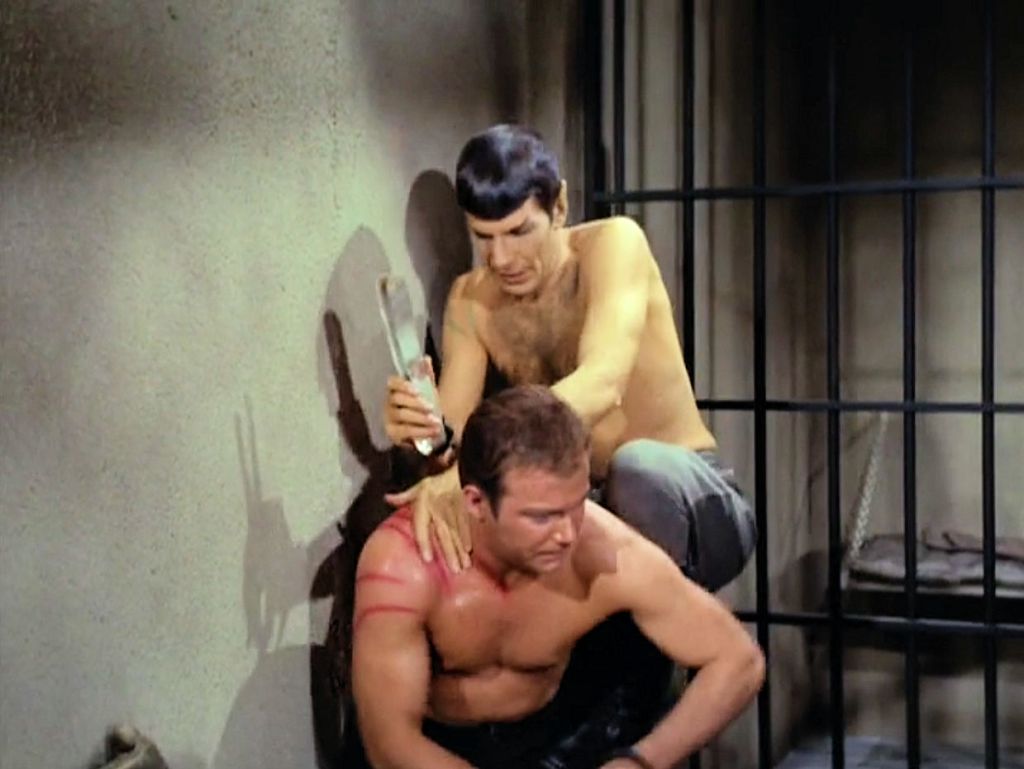
Some of the dramatic moments do work, but they deserved a better episode. During the prologue, Spock describes the two planets: “The Ekosians are a primitive, warlike people in a state of anarchy. The other planet, Zeon, has a relatively high technology and its people are peaceful.” Just as overpowering their enemies with advanced technology was part of the real Nazis’ strategy, so Ekos has now developed nuclear missiles with which to threaten Zeon. But this all came about because of the generosity (or hubris?) of the Zeons, sharing a foundation of scientific knowledge for the Ekosians to build on: “We thought we were civilizing the Ekosians,” Isak says when explaining early interactions between the two planets. It’s significant that Ekosians and Zeons are working together in the resistance, because they will need to rebuild both worlds together if they defeat the Nazis.

“Patterns of Force” also demonstrates the importance of propaganda to fundamentalist movements: every action must be a success, even when it isn’t. An Ekosian missile attack on the Enterprise is easily thwarted, but Ekosian television (Hey! They have TV, just like us!) broadcasts news of their great victory against a hostile invader. The real Nazis, even when they were clearly losing the war militarily, claimed one triumph after another as long as they could sustain the illusion. Ekosians consistently refer to Zeons as “pigs” but the real Nazis described Jews as child-abductors and Allied soldiers as cowards and criminals. Finally, the episode identifies the necessity of an enemy, an other, as a beacon to nationalism: when asked why the Nazis hate Zeons, Isak says, “Because without us to hate, there would be nothing to hold them together.” Imagine how quickly the modern-day Republican Party would collapse without its irrational fear of immigrants or transgender individuals.

Perhaps the greatest strength of “Patterns of Force” is that it holds humans accountable. Unlike “Wolf in the Fold,” where evil is a shapeless force beyond our control, the villains here are easy to identify: John Gill and Melakon (Skip Homeier), the Ekosian who pushes Gill’s already twisted vision to its inevitable conclusion. Melakon drugs Gill and masterminds the Final Decision in a bare-faced power grab. “We were betrayed,” Gill says of Melakon, “by a self-seeking adventurer who has led us all to the very brink of disaster.” When a nearly comatose Gill delivers his penultimate speech, it’s hard not to think of a certain Very Stable Genius: “The speech follows no logical pattern,” Spock says, and Kirk calls it, “Random sentences strung together.” Gill’s sins are hubris and a failure to heed the lessons of his own profession. “Even historians fail to learn from history,” Gill says. “They repeat the same mistakes.” Gill claims he interfered in the first place because Ekos was “divided” and “fragmented,” without justifying why that required intervention. He goes so far as to call the Third Reich the “most efficient state earth ever knew,” and Spock agrees with him! The myth of Nazi efficiency was still widely believed in the 1960s, and many still believe it today. In fact, Germany under the Nazis created a false reduction in unemployment by removing women from the workforce while simultaneously importing twelve million factory and farm workers from other countries as forced labor. Wartime Germany generated funds partly through theft of assets from Jewish citizens and similar theft from countries it occupied. Militarily, the country became too extended to support itself, caused in part by the disastrous invasion of the Soviet Union in the winter of 1941. If Nazi Germany had been as efficient as some people claim, they would probably have won the war. And how could John Gill, a student of history, ever have believed that the Nazis were superior to the post-racial, post-capitalist, post-everything-bad Federation of the 23rd century?
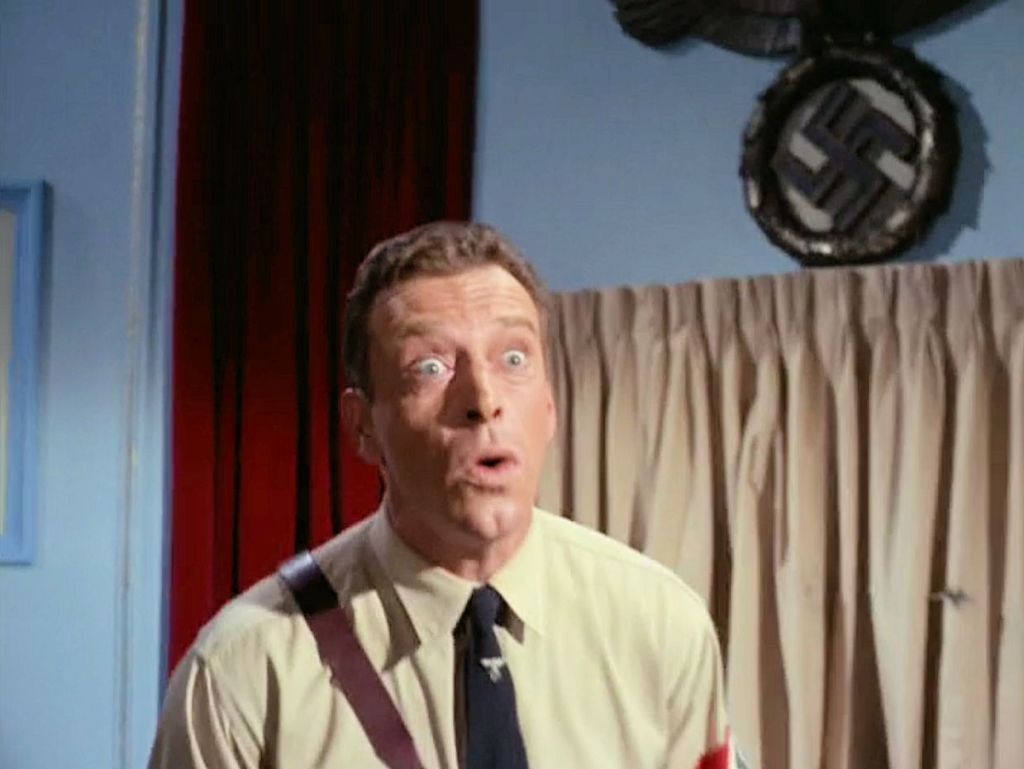
Sometimes a lack of subtlety works – I consider the very un-subtle season three episode “Let That Be Your Last Battlefield” one of TOS’ finest moments – but “Patterns of Force” is essentially a clumsy time travel episode wielding deadly serious subjects. Both Leonard Nimoy and William Shatner were Jewish; I haven’t found any statements about how they felt about the episode, but Leonard Nimoy chose not to participate in on-set promotional photographs wearing a Nazi uniform, for fear it would reflect poorly on his participation in a children’s Hanukkah service that same year. (“Patterns of Force” was filmed in late November and early December, 1967.) At least we can take a lesson from the episode, the lesson that John Gill and so many real humans have never mastered. McCoy spells it out for us in the final scene: “A man who holds that much power, even with the best intentions, just can’t resist the urge to play god.” Just to be sure we get it, he swings the hammer again: “Absolute power corrupts absolutely.”

Come to think of it, maybe we have mastered the lesson. Maybe the problem is that too many humans accept absolute corruption. Spock seems to confirm that this has always been the case, when he says, “Your whole earth history is made up of men seeking absolute power.” In the case of Ekos and Zeon, John Gill understands in his final moments that the Prime Directive is ultimately about restraint of power: “The noninterference directive is the only way.” And unlike other planets that Kirk has left in ruins after collapsing their way of life – “The Return of the Archons” and “The Apple” come to mind – Zeon and Ekos seem better prepared to move forward together, with serious people ready to take the lead in uniting the two worlds. Spock even invites comparison to the reunification of East and West Germany, something that didn’t take place until 1990, when he says, “With the union of two cultures, this system would make a fine addition to the Federation.” If that sounds a little ominous, like a colonizer with an eye on future spoils, at least the Zeons and Ekosians have a confidence those previous societies lacked. Instead of being left behind, this time they tell the imperialists to leave.
Next: By Any Other Name